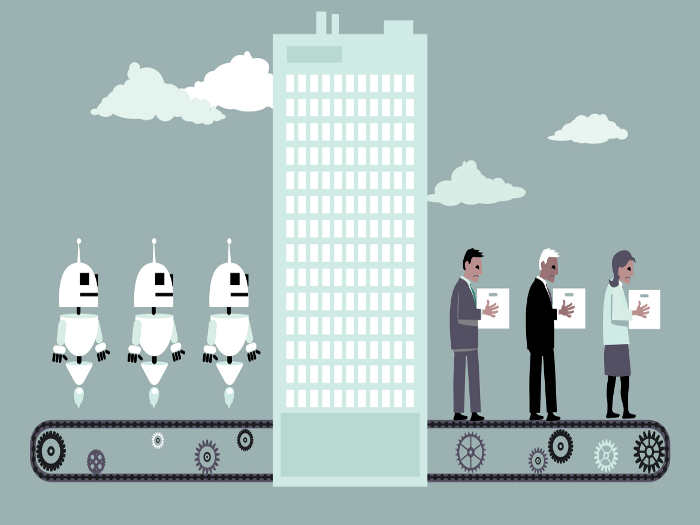
On November 18, the MIT Task Force on the Work of the Future released its final report, The Work of the Future: Building Better Jobs in an Age of Intelligent Machines. The Task Force was commissioned in the spring of 2018 by MIT President Rafael Reif to address what may well be the most critical question of the digital economy: as emerging technologies raise aggregate economic output and the wealth of nations, will they also enable people to attain higher living standards, better working conditions, greater economic security, and improved health and longevity? An interim report was released in September, 2019.
“Amidst a technological ecosystem delivering rising productivity, and an economy generating plenty of jobs (at least until the COVID-19 crisis), we found a labor market in which the fruits are so unequally distributed, so skewed towards the top, that the majority of workers have tasted only a tiny morsel of a vast harvest,” is the Task Force overriding conclusion. Yet, it argues that with better policies in place, more people could enjoy good careers even as new technologies transform the very nature of work.
The Task Force comprehensive report covers a lot of ground. Let me briefly summarize its six key findings.
Technological change is simultaneously replacing existing work and creating new work. It is not eliminating work altogether
“No compelling historical or contemporary evidence suggests that technological advances are driving us toward a jobless future. On the contrary, we anticipate that in the next two decades, industrialized countries will have more job openings than workers to fill them, and that robotics and automation will play an increasingly crucial role in closing these gaps. Nevertheless, the impact of robotics and automation on workers will not be benign. These technologies, in concert with economic incentives, policy choices, and institutional forces, will alter the set of jobs available and the skills they demand.”
A number of recent studies on the future of work have arrived at similar conclusions. For example, a December, 2017 report by McKinsey examined which jobs will likely be displaced by automation through 2030, as well as which jobs are likely to be created over the same period, based on data from 46 countries. McKinsey’s overall conclusion was that a growing technology-based economy will create a significant number of new occupations which will more than offset declines in occupations displaced by automation. However, it added that “while there may be enough work to maintain full employment to 2030 under most scenarios, the transitions will be very challenging – matching or even exceeding the scale of shifts out of agriculture and manufacturing we have seen in the past.”
Momentous impacts of technological change are unfolding gradually
For the past couple of centuries, general-purpose technologies (GPT) have been the key drivers of productivity and economic growth, – thanks to their rapid improvements in price and performance, pervasive applications, and their ability to spur complementary innovations across a wide variety of industries. The steam engine, electricity and the internal combustion engine are prominent examples of such historically transformative GPTs. More recently semiconductors, computers and the Internet have ushered the digital revolution of the past several decades.
Historically transformative GPTs go through two very different periods, investment and harvesting. Being general purpose in nature, they generally require two or three decades of massive complementary investments to achieve their full potential, such as business process redesign, co-invention of new products and business models, the re-skilling of the workforce, and the re-structuring of companies and industries. Moreover, the more transformative the technologies, the longer it takes for them to reach the harvesting period when they’ve been widely embraced by companies and industries across the economy.
AI and related technologies like robotics and machine learning have now emerged as the defining GPTs of our era. But AI is still in its early stages, having only achieved marketplace acceptance in the past decade. “Indeed, the most profound labor market effects of new technology that we found were less due to robotics and AI than to the continuing diffusion of decades-old (though much improved) technologies of the internet, mobile and cloud computing, and mobile phones,” notes the MIT report. “This time scale of change provides the opportunity to craft policies, develop skills, and foment investments to constructively shape the trajectory of change toward the greatest social and economic benefit.”
Rising labor productivity has not translated into broad increases in incomes because labor market institutions and policies have fallen into disrepair
In the 30 years between 1948 and 1978, US productivity as measured by output per hour rose by 108%, an annual growth rate of 2.4%, while the average compensation of production workers increased in lock-step by 95%. But then came the so-called great divergence of the past four decades. Between 1978 and 2016, productivity rose by 66%, an annual growth rate of 1.3%, while median compensation increased by only 9%.
Other advanced economies have experienced similar economic, technological and global forces but their workers have fared much better. According to the OECD, the US had the fourth largest divergence between productivity and median compensation among the 24 countries for which data is available, exceeded only by Poland, South Korea and Hungary, while the divergence was significantly smaller in Germany, the UK, France and Italy.
“What sets the United States apart are U.S.-specific institutional changes and policy choices that failed to blunt, and in some cases magnified, the consequences of these pressures on the U.S. labor market,” notes the MIT report. “The U.S. has allowed traditional channels of worker voice to atrophy without fostering new institutions or buttressing existing ones. It has permitted the federal minimum wage to recede to near-irrelevance, lowering the floor under the labor market for low-paid workers. It has embraced a policy-driven expansion of free trade with the developing world, Mexico and China in particular, yet failed to direct the gains towards redressing the employment losses and retraining needs of workers.”
Improving the quality of jobs requires innovation in labor market institutions
“Work is a crucial human good.” The large and growing gulf between rising productivity and stagnating median wages has broad social and political consequences. “The U.S. must innovate to rebalance the desire of employers for low-cost, minimal commitment, and maximal flexibility, with the necessity that workers receive fair treatment, reasonable compensation, and a measure of economic security. The U.S. must craft and enforce fair labor standards, ensure effective collective bargaining, set a well-calibrated federal minimum wage, extend the scope and flexibility of its unemployment insurance system, and modernize its dysfunctional system of employer-based health insurance.”
Fostering opportunity and economic mobility necessitates cultivating and refreshing worker skills
The US must invest in existing educational institutions, like primary and secondary schools and vocational and college programs, to help workers remain productive in our fast changing economy. In addition, the US must create innovative life-long education and skills development programs. “The distinctive U.S. system for worker training has many shortcomings, but it also has unique virtues, for example, offering numerous points of entry for workers who may want to reshape their career paths or need to find new work after a layoff.”
Investing in innovation will drive new job creation, speed growth, and meet rising competitive challenges
Following World War II, the federal government significantly expanded its support of R&D, which helped to make the US the most prosperous and secure nation in the world, as well as the undisputed leader in science, engineering, medicine and other disciplines. Federal investment in R&D as a percentage of GDP peaked at 1.86% in 1964, but has significantly declined in the past few decades, from a little over 1% of GDP in 1990 to 0.66% in 2016. China, Germany and other countries are now closing the scientific and technological gap with the US.
“Investments in innovation grow the economic pie, which is crucial to meeting challenges posed by a globalized and fiercely technologically competitive world economy,” said the MIT report. “Throughout our studies, we found technologies that were direct results of U.S. federal investment in research and development over the past century and longer: the internet, advanced semiconductors, artificial intelligence, robotics, and autonomous vehicles, to name but a few. These new goods and services generate new industries and occupations that demand new skills and offer new earnings opportunities.”
“We must foster and grow the U.S. innovation system to ensure that when workers are displaced by technological change, they can move to new jobs in new industries. Simultaneously, we can shape the direction of innovation through public investment and policy to maximize these benefits.”
Let me conclude by listing the three major policy areas that the MIT Task Force on the Work of the Future believes should be pursued by the next US administration:
- Invest And Innovate In Skills And Training: “Technological innovation will require workers to have strong foundational skills as well as specialized training.”
- Improve Job Quality: “Government policy in the United States simply fails to ensure adequate pay, a modicum of economic security, and access to basic social benefits for workers in low-paid jobs.”
- Expand and Shape Innovation: “Innovation is key to creating jobs and wealth, and to meeting rising competitive challenges from abroad. The country needs to commit to an innovation agenda that is targeted toward creating social benefits and augmenting (rather than replacing) workers.”
